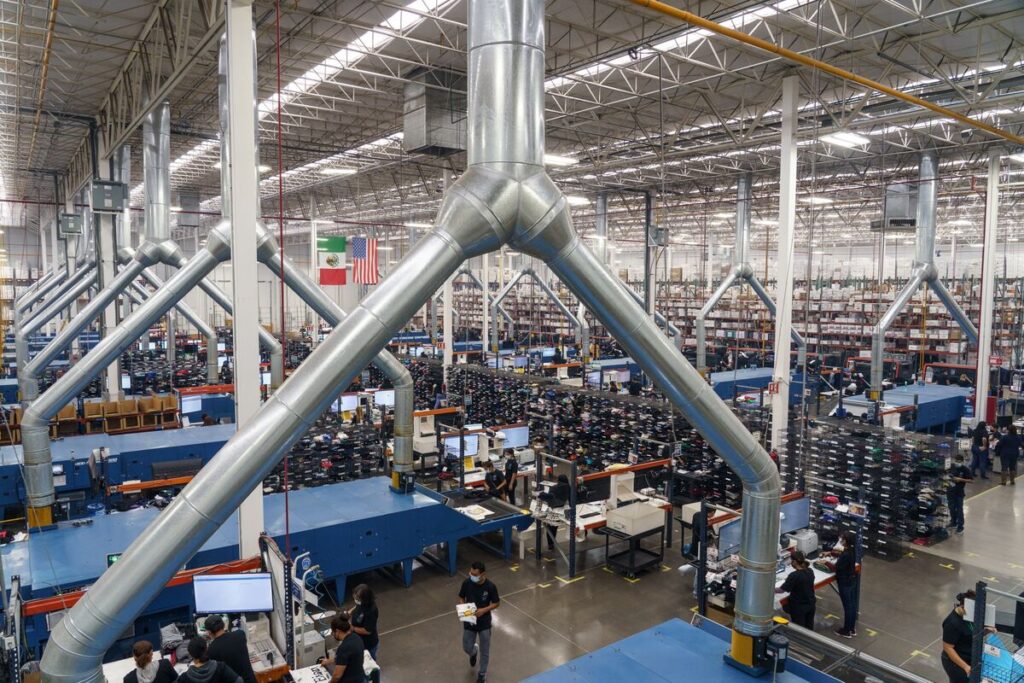Introduction
In today’s rapidly evolving global landscape, supply chain resilience has become a paramount concern for businesses across industries. The consumer electronics sector, characterized by its fast-paced innovation and intense competition, is no exception. Chinese suppliers, who have long dominated the market, are now recognizing the need to diversify their supply chain capabilities for enhanced stability. Expanding operations to Mexico presents a strategic move that promises numerous benefits, ranging from reduced logistical complexities to improved market access. In this blog post, we will delve into the reasons why Chinese consumer electronic component suppliers should consider this shift, accompanied by examples of companies that have already begun their journey.
Geographic Diversification for Risk Mitigation:
China’s position as the world’s manufacturing hub has allowed it to become a crucial player in the consumer electronics supply chain. However, recent events like the COVID-19 pandemic and geopolitical tensions have exposed vulnerabilities inherent in overreliance on a single manufacturing location. Expanding operations to Mexico can serve as a risk mitigation strategy, ensuring production continuity even in the face of unforeseen disruptions.
Proximity to North American Markets:
Mexico’s strategic location, bordering the United States and with strong trade ties to North America, offers a significant advantage. By establishing a presence in Mexico, Chinese suppliers can significantly reduce shipping times and costs when supplying products to North American markets. This proximity translates to faster response times to changing consumer demands and trends, ultimately boosting customer satisfaction.
Trade Agreements and Market Access:
Mexico’s membership in trade agreements like the United States-Mexico-Canada Agreement (USMCA) grants companies operating within its borders preferential access to these markets. This presents an opportunity for Chinese suppliers to diversify their market reach and cater to a broader consumer base without facing the same trade barriers as when exporting directly from China.
Skilled Workforce and Infrastructure:
Mexico has developed a skilled workforce and a robust manufacturing infrastructure that aligns well with the needs of the consumer electronics industry. Chinese companies can leverage this existing talent pool and infrastructure to expedite their manufacturing processes and ensure the consistent quality of their products.
Enhanced Resilience Through Diversification:
The disruptions caused by the pandemic and various geopolitical tensions underscore the importance of diversifying supply chain sources. Expanding operations to Mexico allows Chinese suppliers to mitigate risks associated with overreliance on a single manufacturing location. A diversified supply chain is better equipped to navigate unexpected disruptions, ensuring a consistent flow of components to meet consumer demands.
Collaboration and Innovation:
Collaboration often sparks innovation. By establishing a presence in Mexico, Chinese suppliers can tap into the region’s growing tech ecosystem, fostering collaboration with local companies, universities, and research centers. This cross-pollination of ideas can lead to the development of new products, technologies, and solutions that address evolving consumer preferences and industry trends
Skilled Workforce and Competitive Labor Costs:
Mexico boasts a skilled and increasingly tech-savvy workforce, particularly in the areas of manufacturing and engineering. The availability of a well-trained labor force can streamline production processes and contribute to the overall efficiency of operations. Additionally, Mexico’s competitive labor costs offer a favorable environment for reducing operational expenses.
Sustainability and Environmental Considerations:
Environmental concerns are reshaping supply chain strategies globally. Expanding to Mexico can facilitate the reduction of carbon emissions associated with lengthy international shipments, aligning with growing consumer demands for sustainable practices. This move can also open opportunities for adopting cleaner and greener production methods.
Proactive Risk Management:
Global supply chains face a multitude of risks, from natural disasters to geopolitical tensions. Expanding to Mexico represents a proactive approach to risk management. By diversifying production locations, companies can spread the risk and minimize the impact of potential disruptions.
Success Stories: Chinese Companies Expanding to Mexico:
Several Chinese companies have already embarked on the journey of expanding their operations to Mexico, reaping the benefits of this strategic move:
TCL Corporation: A prominent Chinese electronics company, TCL established a manufacturing facility in Mexico to produce TVs and displays. This move has enabled TCL to cater more effectively to North American consumers and streamline their supply chain operations.
Lenovo: Chinese computer maker, Lenovo, opened a new state-of-the-art manufacturing facility in Monterrey, Mexico dedicated to manufacturing servers for cloud computing and data storage. As international shipping problems intensified, the company switched to a supplier based in Guadalajara and found new sources for packaging materials in Mexico as well.
BYD: A major player in the electric vehicle and battery industry, BYD expanded its operations to Mexico, benefiting from the country’s strategic location to supply both North American and global markets more efficiently.
Conclusion
Diversifying supply chain capabilities by expanding operations to Mexico presents a compelling proposition for Chinese consumer electronic component suppliers. This strategic move not only mitigates risks associated with single-location manufacturing but also opens doors to new markets, accelerates response times, and harnesses a skilled workforce. By taking inspiration from the success stories of companies like TCL, Lenovo, and BYD, Chinese suppliers can proactively enhance their resilience in an ever-changing global landscape.
Expanding operations to Mexico offers a myriad of advantages, ranging from reduced lead times and enhanced market access to collaboration opportunities and sustainable practices. As businesses seek to strengthen their resilience and adaptability in an ever-changing landscape, the move to Mexico holds the potential to bolster growth and ensure long-term success. By embracing this strategic shift, Chinese suppliers can position themselves as leaders in a new era of supply chain management. As they say, it’s not just about where you start, but also about where you strategically position yourself for the future.

